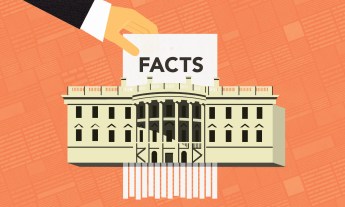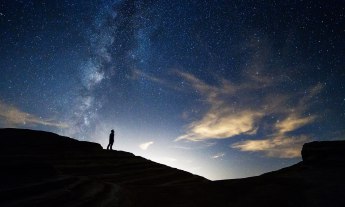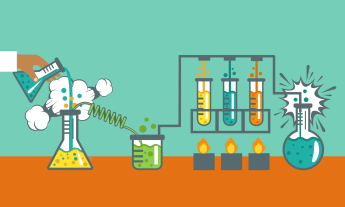
Not a scientist? As David Lang shows, you can still play a meaningful role in solving science’s hardest problems.
It’s hard to find a silver lining in the water crisis of Flint, Michigan. The striking images of jugs of brown water being held high in protest are a symbol of institutional failure on a grand scale. It’s a disaster. But even as questions of accountability and remedy remain unanswered, there is already one lesson we can take away: Citizen science can be used as a powerful tool to build (or rebuild) the public’s trust in science.
Because the other striking image from Flint is this: Citizen-scientists sampling and testing their own water, from their homes and neighborhoods, and reporting the results as scientific data. Dr. Marc Edwards is the Virginia Tech civil engineering professor who led the investigation into the lead levels in Flint’s water supply, and in a February 2016 interview with The Chronicle of Higher Education, he gave an important answer about the methods his team used to obtain the data: “Normal people really appreciate good science that’s done in their interest. They stepped forward as citizen-scientists to explore what was happening to them and to their community, we provided some funding and the technical and analytical expertise, and they did all the work. I think that work speaks for itself.”
It’s a subtle but important message: The community is rising up and rallying by using science, not by reacting to it. Other scientists trying to highlight important issues and influence public opinion would do well to take note, because there’s a disconnect between what science reports and what the general public chooses to believe. For instance, 97 percent of scientists agree that the world’s climate is warming, likely due to human activities. Yet only 70 percent of Americans believe that global warming is real. Many of the most important issues of our time have the same, growing gap between scientific and societal consensus: genetically modified foods, evolution, vaccines are often widely distrusted or disputed despite strong, positive scientific evidence.
The causes for the disconnect are long and sordid. Activist lobbying groups have focused and skewed the conversation, while scientists’ communication efforts (or lack thereof) struggle to be heard above the noise. Meanwhile, an ineffective education system practically ensures that levels of scientific understanding are minimal. There’s more than enough blame to go around. But those of us looking to come up with a solution to the problem need to do more than just plug the holes. We need to figure out how to actively build trust.
The difference between “here are the results of a study” and “please help us in the process of discovery” is profound.
The good news is that we’re learning. Citizen science — the growing trend of involving non-professional scientists in the process of discovery — is proving to be a supremely effective tool. It now includes far more than birders and backyard astronomers, its first amateur champions. Over the past few years, the discipline has been gaining traction and popularity in academic circles too. Involving groups of amateur volunteers is now a proven strategy for collecting data over large geographic areas or over long periods of time. Online platforms like Zooniverse have shown that even an untrained human eye can spot anomalies in everything from wildebeest migrations to Martian surfaces. For certain types of research, citizen science just works.
While a long list of peer-reviewed papers now backs up the efficacy of citizen science, and a series of papers has shown its positive impact on students’ view of science, we’re just beginning to understand the impact of that participation on the wider perception of science. Truthfully, for now, most of what we know so far about its public impact is anecdotal, as in the work in Flint, or even on our online platform for explorers, OpenExplorer.
There, I’ve seen Laura James become something of a citizen science folk hero as she rallied attention to the problem of Sea Star Wasting Syndrome in the Puget Sound. By adding citizen science, the story became about much more than just bad news about the environment. There were clear and specific ways for people to get involved as scientists worked to find out what was causing the mass die-off of sea stars. The scientific method became the message. Citizen scientists also changed the way the story was covered by media outlets — it became an important public interest story. The coverage even inspired Congressman Denny Heck to introduce the Marine Disease Emergency Act to Congress. Something similar is now happening with sick sea turtles around Hawaii.
It makes sense that citizen science should affect public perception of science. The difference between “here are the results of a study” and “please help us in the process of discovery” is profound. It’s the difference between a rote learning moment and an immersive experience. And even if not everyone is getting involved, the fact that this is possible and that some members of a community are engaging makes science instantly more relatable. It creates what Tim O’Reilly calls an “architecture of participation.” Citizen scientists create the best interface for convincing the rest of the populace.
A recent article in Nature argued that the DIY biology community was, in fact, ahead of the scientific establishment in terms of proactively thinking about the safety and ethics of rapidly advancing biotechnology tools. They had to be. For those people opening up community labs so that anyone can come and participate, public health issues can’t be pushed aside or dealt with later. After all, they are the public that will be affected.
Beyond peer-reviewed papers, these stories are inspiring communities and instigating important conversations and political action. It’s deep, sustained involvement. Of course, this model isn’t right for all types of science, but it is an important step toward democratizing science and building greater comprehension. All scientists, especially those working on conservation and community health issues, should be adding this method to their toolbox. Hopefully, with more citizen science projects like these, science can continue to build more of the public trust it desperately needs.












